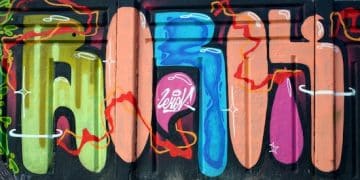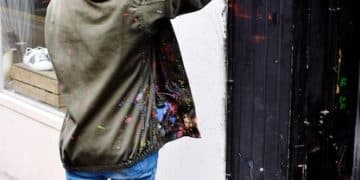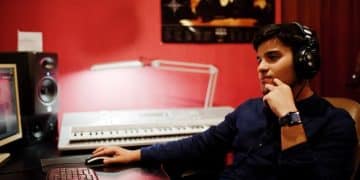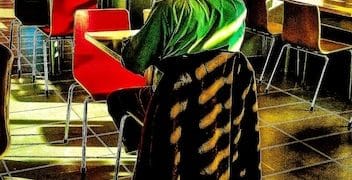2025 US Copyright Law & Graffiti Rights: Impact Analysis
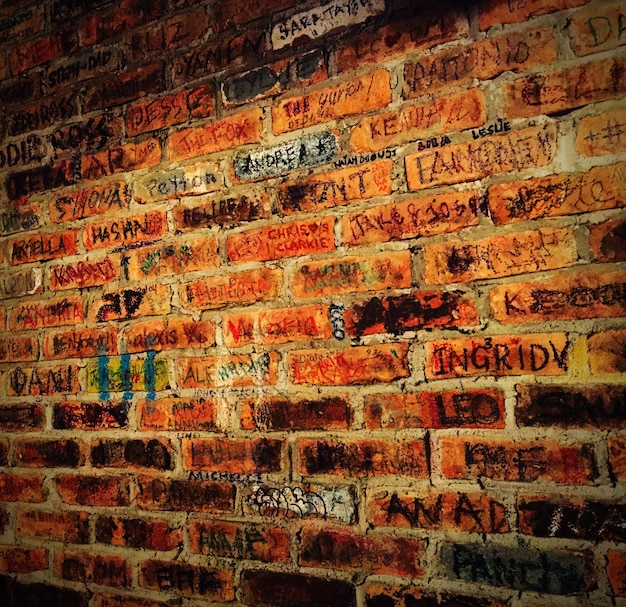
The updated 2025 US Copyright Law profoundly impacts graffiti artists’ rights by clarifying ownership, outlining fair use, and addressing digital reproduction, significantly shaping how their illicit art is legally protected and recognized.
The intersection of art and legality has always been a complex landscape, especially for a medium as inherently rebellious as graffiti. As the calendar turns towards 2025, the United States is poised to unveil updated copyright legislation, a development that carries significant implications for various creative fields. For graffiti artists, questions abound: How Will the Updated 2025 US Copyright Law Impact Graffiti Artists’ Rights? Will it offer new protections, redefine existing boundaries, or introduce novel challenges? This article delves into the potential ramifications, examining how these legal shifts could reshape the dynamic relationship between street art and intellectual property law.
Understanding the Current Landscape of Graffiti Copyright
Before delving into the specifics of the 2025 updates, it’s crucial to grasp the existing legal framework governing graffiti art in the US. Currently, graffiti, like any other creative expression, can theoretically be protected under copyright law. This protection arises automatically the moment an original work of authorship is fixed in a tangible medium. However, the unique nature of graffiti—often created without permission on public or private property—introduces significant complexities and legal ambiguities.
The “originality” and “fixation” requirements are generally met by most graffiti. An artist’s unique style, composition, and execution establish originality, while its presence on a wall, train, or other surface constitutes fixation. The real challenge emerges from the illicit nature of its creation. Courts have grappled with whether an illegal act can still generate legal rights, leading to a patchwork of rulings that sometimes favor artists and other times property owners.
Key Legal Precedents and Their Limitations
Several landmark cases have shaped the current understanding, though without establishing a definitive, nationwide standard. These cases often highlight the tension between artistic freedom and property rights.
- “5Pointz” Case (Cohen v. G & M Realty L.P.): This pivotal case from New York saw a property owner held liable for destroying a famous graffiti mecca. The court ruled that the works, protected under the Visual Artists Rights Act (VARA), deserved protection, showcasing a significant win for artists.
- Ownership vs. Infringement: While VARA offers some protection against destruction for works of “recognized stature,” it doesn’t automatically grant artists the right to control unauthorized commercial reproductions of their illegal work. Companies often use graffiti images in advertising, leading to costly and protracted legal battles.
- The “Clean Hands” Doctrine: Some courts have historically applied the “clean hands” doctrine, arguing that those who engage in illegal acts (like trespassing or vandalism) should not benefit from legal protections for those acts. This doctrine, while not universally applied, remains a potential hurdle for graffiti artists seeking copyright enforcement.
The current legal environment can therefore feel like a minefield for graffiti artists. They possess theoretical rights but face immense practical and financial obstacles in enforcing them. The lack of clear, consistent guidelines across jurisdictions further complicates matters, leaving artists vulnerable to appropriation and destruction without adequate recourse. This evolving legal landscape sets the stage for the 2025 updates, which are anticipated to bring a more unified and definitive approach to these persistent issues.
In essence, while the creative spirit of graffiti art has long transcended legal boundaries, its recognition within the realm of intellectual property has been a battleground. The existing framework offers glimpses of protection but is largely insufficient for a medium born from rebellion and often existing in the shadows.
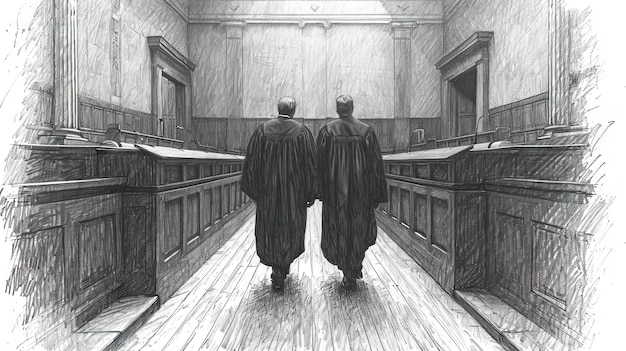
Proposed Changes in the 2025 US Copyright Law Relevant to Graffiti
The much-anticipated 2025 US Copyright Law introduces several amendments that could significantly clarify and redefine the rights of creators, including graffiti artists. While the full text is still undergoing final refinements, leaked drafts and legislative discussions point to specific areas designed to modernize copyright in an increasingly digital and visually driven world. These changes aim to address ambiguities, streamline infringement claims, and potentially expand the scope of protected works, which has direct implications for street art.
Enhanced Definition of “Original Works”
One of the most critical aspects of the upcoming law is a proposed refinement to the definition of “original works of authorship.” While graffiti has always fulfilled the basic requirements of originality and fixation, the new law seeks to explicitly include works created in unconventional public spaces, even if those spaces are not legally approved by the property owner. This amendment could shift the focus from the legality of the *creation act* to the *inherent originality* of the artwork itself.
- Decoupling Legality from Copyrightability: The updated language may explicitly state that the manner or location of creation does not automatically negate copyright protection, as long as the work otherwise meets the criteria of originality and fixation.
- Focus on Artistic Merit: This subtle but powerful shift could empower artists to claim ownership over their work regardless of perceived illegality, provided they can prove authorship.
- Burden of Proof: Artists would still need to demonstrate that the work is theirs and was created as an original expression, which might involve dating, photographic evidence, and witness testimonies.
This is a pivotal change because it directly confronts the “clean hands” doctrine that has often been an impediment. By focusing on the artistic output rather than the transgression, the law moves towards a more inclusive interpretation of copyright, acknowledging the creative value regardless of its origins.
Digital Reproduction and AI Considerations
The 2025 law is expected to include robust provisions regarding digital reproduction and the use of copyrighted material by artificial intelligence. This is particularly relevant for graffiti, which is frequently photographed, shared, and digitally manipulated without the artist’s consent. With AI models increasingly “learning” from vast datasets of images, including street art, the question of attribution and compensation becomes paramount.
The new legislation aims to:
- Clarify Digital Rights: Explicitly define what constitutes unauthorized digital reproduction and distribution of copyrighted imagery, making it easier for artists to pursue claims against websites, social media platforms, and commercial entities using their work without license.
- AI Data Use: Introduce guidelines or requirements for AI developers concerning the use of copyrighted works in training datasets. This could involve mandatory licensing, attribution requirements, or even compensation structures for artists whose work is used to feed AI models.
- Easier Takedowns: Implement expedited processes for artists to request takedowns of infringing digital content, potentially leveraging blockchain technology for verifiable authorship and time stamping.
These digital provisions are crucial for graffiti artists who often see their outdoor works instantly go global online, frequently stripped of attribution and commercialized by third parties. The goal is to provide artists with more tools to control the digital life of their creations, ensuring they benefit from their work rather than having it exploited.
Furthermore, discussions around expanded fair use guidelines are also on the table. While fair use typically allows for limited use of copyrighted material without permission for purposes such as commentary, criticism, news reporting, teaching, scholarship, or research, the 2025 law may refine these interpretations. For graffiti artists, this could mean clearer boundaries on when their work can be used by others (e.g., in documentaries about urban art versus commercial advertisements) and when it cannot. The emphasis is on balancing the rights of creators with the public interest in creative expression and information dissemination.
These anticipated changes represent a significant step towards acknowledging the legitimacy of graffiti as an art form deserving of legal protection, even if its presence on property remains a contentious issue. The law seeks to carve out pathways for artists to assert their rights in both the physical and digital realms, fostering a more equitable environment for street art creators.
Potential Benefits for Graffiti Artists
The upcoming 2025 US Copyright Law, with its modernized approach to intellectual property, holds the promise of several significant benefits for graffiti artists. These changes could finally bridge some of the gaps in legal protection that have historically left street artists vulnerable to exploitation and appropriation.
Strengthened Ownership and Control Rights
One of the most impactful changes involves the potential for enhanced recognition of ownership rights, regardless of the legality of the artwork’s creation site. If the law explicitly decouples the act of creation from the inherent copyrightability of the work, graffiti artists could find themselves on much firmer legal ground.
- Clearer Claims: Artists would have a stronger basis to assert ownership over their tags, murals, and pieces, making it easier to pursue legal action against anyone who reproduces, adapts, or displays their work without permission.
- Commercialization Opportunities: This clearer ownership could open doors for artists to control the commercialization of their work. They could license images of their graffiti for merchandise, advertising campaigns, or art prints, ensuring they profit from their creations rather than third parties.
- Veto Power over Alterations: With recognized copyright, artists might gain more robust moral rights, including the right to prevent distortion, mutilation, or other modifications of their work that could harm their reputation. This would extend beyond the current, limited protections offered by VARA for works of “recognized stature” and could apply to a broader range of graffiti pieces.
Such clarity empowers artists to treat their work as intellectual property, giving them a voice in how it is used and perceived. This shift could transform the street art industry, allowing artists financial returns and greater artistic integrity, similar to traditionally sanctioned art forms.
Improved Protection Against Unauthorized Reproduction
The digital age has presented a double-edged sword for graffiti artists: unparalleled exposure but also rampant unauthorized reproduction. The 2025 law’s provisions on digital rights and AI use are poised to offer much-needed protections.
- Digital Footprint Management: Artists will likely have more effective tools to monitor and control the use of their work online. This includes easier mechanisms for issuing takedown notices to social media platforms and websites that host infringing content.
- Combatting AI Appropriation: If AI models are required to license or attribute works used in their training data, it sets a precedent for compensating artists whose styles and creations contribute to AI-generated art. This could create new revenue streams or, at minimum, prevent wholesale uncredited appropriation.
- Evidence Gathering: The clarification of digital rights could also simplify the process for artists to gather evidence for infringement claims, making legal action more feasible and less costly.
By establishing clearer rules around digital use, the updated law acknowledges the persistent challenges artists face in the online realm. It aims to empower them to protect their digital art assets, ensuring that their work is not only seen but also respected and, where appropriate, compensated for. This is particularly vital in a world where a mural posted on Instagram can instantly become a global phenomenon, often bypassing the creator’s agency and financial benefit.
These potential benefits collectively suggest a future where graffiti artists are not just seen as vandal, but as legitimate creators deserving of the same intellectual property rights afforded to artists working in more traditional mediums. The law’s evolution aims to provide a more level playing field, offering recourse against exploitation and encouraging greater respect for street art.
Challenges and Unintended Consequences for Graffiti Artists
While the updated 2025 US Copyright Law presents promising benefits for graffiti artists, it is also crucial to consider the potential challenges and unintended consequences that might arise. Legal reforms, especially in complex areas like intellectual property and public art, rarely offer universally positive outcomes and often introduce new dilemmas.
Difficulty in Enforcement and Attribution
One of the primary challenges for graffiti artists will likely remain the practical enforcement of their rights. Despite a stronger legal framework, the inherent nature of street art—often anonymous, transient, and created without formal documentation—can make it difficult to prove authorship and pursue claims.
- Anonymity vs. Rights: Many graffiti artists operate under pseudonyms or remain anonymous to avoid legal repercussions for trespassing or vandalism. Asserting copyright protection often requires revealing one’s identity, which could expose them to existing legal liabilities related to the creation of the art itself.
- Proving Authorship: Unlike studio artists who can track their work through commissions, sales, and exhibition records, graffiti artists might struggle to definitively prove they created a specific piece, especially if it’s altered or removed quickly. This might necessitate new forms of documentation, such as timestamped photos or witness statements, which could undermine the spontaneous nature of graffiti.
- Cost of Litigation: Even with clearer laws, copyright infringement lawsuits are notoriously expensive and time-consuming. Most graffiti artists lack the financial resources to pursue such cases, leaving them vulnerable to well-funded corporations who might appropriate their work.
The law’s intent to protect may be clear, but the practical hurdles for individual artists to utilize these protections could remain substantial. The tension between remaining anonymous for personal or legal safety and stepping forward to claim intellectual property rights will be a significant dilemma for many creators.
Public vs. Private Property Boundaries
The core conflict of graffiti art lies in its creation on property that is not its own. While the 2025 law may decouple the act of creation from copyrightability, it does not erase property laws. This creates an interesting dichotomy where an artist may own the copyright to an illegal work, but the property owner retains the right to remove it.
- Right to Erase: Property owners will likely retain the undisputed right to paint over, remove, or destroy graffiti on their property, regardless of its copyright status. This means a protected work could disappear at any moment, limiting the artist’s ability to benefit from its existence.
- Vandalism Charges: Asserting copyright in court could inadvertently highlight the illegal nature of the work’s creation, potentially exposing the artist to vandalism or trespassing charges, even if the copyright claim is successful.
- “De Facto” Loss of Rights: If a property owner erases a piece before an artist can document it adequately or pursue a claim, the artists’ copyright, though theoretically existing, becomes “de facto” unenforceable for a work that no longer exists in its tangible, original form.
This ongoing tension between intellectual property rights and physical property rights means that artists might win the battle for their copyright only to lose the war for their art’s existence. The law will need to navigate this delicate balance carefully, and artists will need to strategize how to best protect their work without exposing themselves to undue legal risk regarding their actions.
Ultimately, while the 2025 업데이트 could provide a much-needed legal foundation, its true impact will depend on how enforcement mechanisms adapt and how artists themselves choose to engage with the new system. The inherent rebellious spirit of graffiti may find itself at odds with the formal structures required for copyright protection, leading to new forms of artistic and legal challenges.
Comparison with International Copyright Laws for Street Art
The US is not alone in grappling with the complexities of copyright for street art. Many countries worldwide have faced similar issues, with their legal frameworks offering diverse approaches that can provide context for the 2025 US updates. Understanding these international precedents sheds light on how different jurisdictions balance artistic freedom, intellectual property, and property rights.
Varying Levels of Protection
Internationally, the degree of copyright protection for street art varies significantly. Some countries offer more explicit or robust frameworks than others.
- France: French copyright law, which emphasizes “moral rights,” tends to be highly protective of artists. While illegal placements are still treated as vandalism, artworks, once created, are strongly protected against mutilation or destruction even by the property owner, unless they are illegal in the first place or their removal is necessary due to safety reasons. The artist retains significant control over the integrity of their work.
- Germany: German copyright law also recognizes strong moral rights, including the right of integrity. However, the balance between property owner rights and artist rights is often debated, especially for unauthorized works. Courts tend to decide on a case-by-case basis, considering factors like the artistic value and public recognition of the work.
- Australia: Australian law offers copyright protection to street art, but similar to the current US approach, the illegality of its creation often complicates enforcement. Property owners have a strong right to remove or destroy works on their property. However, artists have successfully sued for unauthorized commercial use of their work.
These examples highlight a spectrum from strong moral rights protections (France, Germany) to a more property-owner-centric approach (Australia, and currently, the US). The 2025 US law appears to be moving towards a more explicit recognition of artistic copyright, drawing closer to the philosophies seen in European jurisdictions, particularly concerning the separation of copyright protection from the legality of the physical placement.
Lessons from International Jurisprudence
The experiences of other nations offer valuable insights into the potential trajectory and challenges for the US. One key lesson is the importance of clarity in legislation, particularly regarding digital uses.
European Union directives, for instance, have been pushing for stronger accountability from online platforms for hosting copyrighted content, an area where the 2025 US law also seeks to fortify its stance against digital appropriation. Another lesson is the ongoing struggle to reconcile property owner rights with artistic expression. While France’s VARA-like protections are robust, property owners still typically retain the right to erase art deemed undesirable, underscoring that absolute protection for unsanctioned work remains elusive. The balance often depends on whether the artwork has achieved “recognized stature” or has been commissioned, which raises questions for the majority of street art.
The global trend suggests a gradual but noticeable shift towards recognizing graffiti as a legitimate art form deserving of intellectual property protection. However, the legal frameworks rarely provide a complete shield against removal or legal consequences for property damage. The 2025 US Copyright Law aims to incorporate some of these international learnings, particularly in moving past the “clean hands” doctrine and explicitly addressing digital rights, while still navigating the unique American legal landscape concerning property ownership.
Ultimately, while the US updates won’t create a carbon copy of any international law, they reflect a global discourse on the rights of unconventional artists. The comparative analysis suggests that even with improved copyright, graffiti artists will continue to operate in a nuanced legal space, balancing creative expression with societal norms and property rights.
Navigating Legalities: Advice for Graffiti Artists in 2025
As the 2025 US Copyright Law comes into effect, graffiti artists will need to adapt their practices to both leverage new protections and mitigate potential risks. Navigating the revamped legal landscape will require a blend of awareness, documentation, and strategic decision-making. Here’s practical advice for artists looking to protect their work and themselves.
Documentation and Proof of Authorship
With stronger copyright comes a greater need to prove authorship. For works that are often ephemeral or created incognito, meticulous documentation will be paramount.
- Timestamped Photographs/Videos: Always photograph or video record your work immediately upon completion. Use tools that embed timestamps and geo-locations into media files. Consider using third-party services that can verify the date and time of creation.
- Sketchbooks and Preparatory Works: Maintain detailed sketchbooks, digital files, and preparatory drawings. These can serve as critical evidence of your creative process and intent, linking you directly to the finished piece.
- Witnesses and Collaborators: If working with a crew or alongside others, have them acknowledge your contribution. Their testimony can be crucial in establishing authorship.
- Licensing and Registration (Optional): While copyright is automatic, formally registering your work with the US Copyright Office can significantly strengthen your legal position, making it easier to sue for infringement. For works created legally or with permission, this is a highly recommended step. Even for unsanctioned works, a “blanket” registration of a portfolio might be considered, though it comes with inherent risks.
This robust documentation strategy reduces the anonymity that often accompanies graffiti, creating a paper (or digital) trail that can be used in court. These records are vital for proving originality, fixation, and ultimately, ownership of the intellectual property.
Engaging with Property Owners and the Law
The revised law will not invalidate property rights. Therefore, proactive engagement, where possible, can be a protective measure.
- Seeking Permission: Whenever feasible, obtain permission from property owners. A written agreement or contract allows you to create art legally, often solidifying your copyright claims and potentially preventing the work’s premature destruction.
- Understanding Local Ordinances: Familiarize yourself with local anti-graffiti laws. While the federal copyright law may protect your art, local ordinances could still lead to legal consequences related to trespassing or vandalism. Understanding these boundaries helps in tactical decision-making.
- Consulting Legal Counsel: If your work is commercially exploited or becomes widely recognized, consulting an attorney specializing in intellectual property or art law is advisable. They can guide you through infringement claims and help navigate the complex intersection of copyright and property law.
- Controlled Spaces: Consider focusing some of your work on legal walls, art installations, or commissioned projects where your rights are less ambiguous and easier to exercise. These works can still build your portfolio and brand while offering clear legal ground.
By being more strategic and, when possible, engaging with legal channels, graffiti artists can leverage the 2025 copyright updates to their advantage. This doesn’t mean abandoning the subversive nature some graffiti embodies, but rather understanding how to operate within a system that is slowly, if reluctantly, starting to acknowledge street art as a valid and protectable form of creative expression. The legal landscape is shifting, and artists who adapt will be best positioned to benefit from these changes.
Future Outlook and Evolution of Graffiti Art Protection
The 2025 US Copyright Law marks a significant turning point, but it is unlikely to be the final word on the protection of graffiti art. The intersection of artistic expression, property rights, and digital advancements is a dynamic field, and the law will continue to evolve. The future outlook suggests a continued push-and-pull, with artists, legal professionals, and lawmakers constantly refining the boundaries of protection.
Ongoing Debates and Legislative Refinements
Even with the updated law, certain debates are expected to persist, potentially leading to further legislative refinements down the line. The definition of “recognized stature” under VARA for permanent public art, for instance, could see more litigation as artists seek to expand its scope beyond traditionally sanctioned works. The specific implementation of AI-related copyright clauses will also likely be tested in courts, leading to clearer precedents for how algorithms can use existing art without consent.
There will probably be continuous discussions on how to harmonize federal copyright protections with local anti-graffiti ordinances. While federal law might protect the artistic value, local laws enforce property rights. Future legislation might explore mechanisms for municipal entities to recognize and potentially protect specific works within their jurisdictions, similar to historic landmark designations for buildings. This could involve creating public art registries that acknowledge both the artistic merit and the property owner’s right to manage their assets.
The Role of Technology in Protecting Artists’ Rights
Technological advancements are poised to play an increasingly critical role in the enforcement and protection of graffiti artists’ rights.
- Blockchain for Attribution: Blockchain technology could offer immutable records of creation and ownership. Artists may start “minting” their work as NFTs (Non-Fungible Tokens) or using blockchain-based timestamping services to create irrefutable proof of authorship even for physical works. This could dramatically streamline the process of asserting copyright online and offline.
- AI-Powered Monitoring: AI itself could become a tool for artists, with software capable of scanning the internet for unauthorized reproductions of their work, identifying infringements, and even initiating takedown procedures automatically. This could democratize enforcement, making it more accessible for individual artists.
- Augmented Reality (AR) Integration: AR tools could allow for virtual overlays on physical street art, providing digital attribution, links to artists’ portfolios, or even monetization options. This would give artists more control over the narrative and commercial aspects of their physically created work.
These technological solutions offer promising avenues for artists to assert control over their intellectual property in an increasingly digital world, providing proactive protection rather than reactive litigation. They could shift the balance of power, giving individual artists more agency against large corporations or anonymous infringers.
The evolution of graffiti art protection is a complex journey, deeply intertwined with societal views on public space, artistic legitimacy, and technological innovation. The 2025 US Copyright Law is a significant stride, establishing a more defined legal landscape. However, it is just one step in an ongoing dialogue that will continue to shape how street art is created, appreciated, and legally safeguarded in the years to come.
The Ethical Imperatives of Copyright for Illicit Art
As the legal framework around graffiti art evolves with the 2025 US Copyright Law, it’s imperative to consider the ethical dimensions of copyrighting art that is, by its nature, often illicit. This discussion moves beyond mere legality to delve into the moral responsibilities of artists, corporations, and the public toward works created in a gray area of legality.
Balancing Artist Rights with Property Owner Concerns
The central ethical dilemma lies in balancing an artist’s right to their creative output with a property owner’s right to control their private or public space. The 2025 law aims to provide copyright protection regardless of the method of creation, but it does not diminish the property owner’s right to remove or obscure the art, nor does it absolve the artist of potential criminal charges for trespassing or vandalism.
- Respect for Property: Ethically, while an artist may argue for their creative freedom, a property owner has a strong claim to the integrity and appearance of their property. Striking a balance requires acknowledging both perspectives.
- The “Free Use” Expectation: Some property owners or even the public might feel that because graffiti is in a public space and often created illegally, it should be fair game for photography, reproduction, or commercial use without compensation. The new law challenges this informal ethical stance.
- Dialogue and Resolution: The ethical imperative suggests encouraging dialogue between artists and property owners where possible. Legal frameworks can facilitate but not replace an ongoing conversation about what constitutes “acceptable” unsanctioned art and how to address its existence ethically.
The law will certainly bring more clarity, but true ethical resolution requires a shift in public perception and a willingness from all parties to understand and respect differing rights and claims. This is particularly challenging for an art form that often thrives on its subversive nature.
The Commercialization of Illicit Art
Another significant ethical consideration arises when illicit art is commercialized. When a major brand uses an unauthorized graffiti piece in an advertisement, the artist often benefits neither financially nor through attribution. The 2025 law seeks to remedy this, but the underlying ethical questions remain.
- Fair Compensation: Ethically, if a work holds commercial value and is used for profit, the creator should be compensated. The fact that the art was created without permission on a wall does not diminish its artistic or commercial worth when appropriated by a third party.
- Authenticity vs. Exploitation: Graffiti artists often create their work for reasons beyond commercial gain – for expression, social commentary, or community engagement. Having their work exploited for corporate profit can be seen as a violation of the art’s original intent and authenticity.
- The “Street Cred” Dilemma: Some artists might find themselves in an ethical bind: claiming copyright might offer financial reward, but it could also compromise their “street cred” or perceived anti-establishment stance within the graffiti community.
The ethical imperative here is to ensure that while artists gain legal recourse for commercial exploitation, the spirit and original intent of their work are also respected. This means encouraging not just legal compliance, but also ethical sourcing and attribution practices from corporations and commercial users of street art.
Ultimately, the 2025 US Copyright Law provides a legal scaffold for the intricate ethical landscape of graffiti art. It forces a public conversation about what we value in art, who deserves credit, and how to balance creative freedom with civic responsibilities. The law’s success will not only be measured in courtrooms but also in how it fosters a more respectful and equitable appreciation of this vibrant and often controversial art form.
| Key Point | Brief Description |
|---|---|
| 🎨 Enhanced Copyrightability | The law decouples copyright from creation legality, emphasizing original artistic expression. |
| 💻 Digital Protection | Stronger provisions against unauthorized digital reproduction and AI data use. |
| ⚖️ Enforcement Challenges | Artists still face hurdles with anonymity, proof of authorship, and litigation costs. |
| 🖼️ Property Rights Remain | Property owners retain the right to remove or destroy unsanctioned graffiti. |
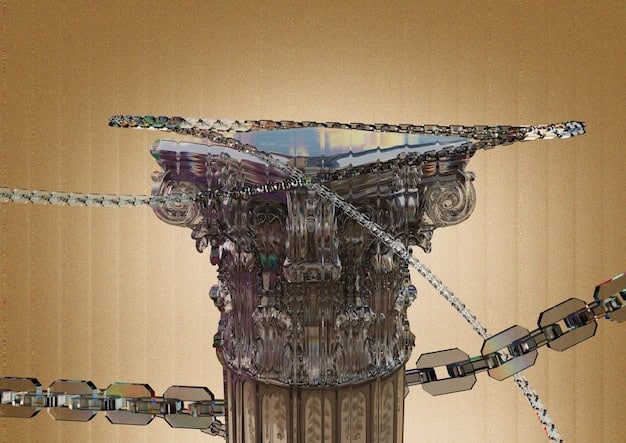
Frequently Asked Questions About Graffiti Copyright in 2025
No, the 2025 US Copyright Law does not legalize graffiti that is created without permission. It primarily addresses the intellectual property rights of the artwork itself, potentially affording copyright protection even to illicitly created works. However, property owners still retain their rights to remove the art, and artists can still face charges for trespassing or vandalism.
The 2025 law aims to strengthen artists’ abilities to sue for unauthorized commercial use of their work, including graffiti. By clarifying copyright ownership irrespective of creation legality, artists will likely have a stronger legal basis for infringement claims against companies that appropriate their street art for commercial purposes without permission or compensation.
Proving ownership requires diligent documentation. Artists should use timestamped photographs or videos, maintain detailed sketchbooks or digital preparatory files, and consider formal copyright registration, especially for pivotal works. Witness testimonies or collaboration agreements can also serve as proof of authorship, strengthening their claim to the intellectual property.
Generally, no. The 2025 law primarily grants intellectual property rights (e.g., against unauthorized reproduction). Property owners typically retain the right to alter, paint over, or remove graffiti on their property, regardless of its copyright status. While VARA offers some protection for works of “recognized stature,” it is often limited in scope and application for unsanctioned street art.
The 2025 law is expected to introduce guidelines or requirements for AI developers regarding the use of copyrighted works, including graffiti, in their training datasets. This could entail mandatory licensing, requiring attribution, or establishing compensation mechanisms for artists whose creations contribute to AI-generated content, offering a new layer of protection and potential revenue.
Conclusion
The updated 2025 US Copyright Law marks a pivotal moment for graffiti artists, signaling a gradual but significant shift in how their work is recognized and protected under federal law. By potentially decoupling copyright protection from the legality of creation and strengthening provisions against digital and AI-driven appropriation, the law offers new avenues for artists to assert ownership and control over their artistic output. While challenges persist—particuarly concerning enforcement, the costs of litigation, and the enduring rights of property owners to remove unsanctioned work—the legislation opens critical doors. Artists are now more empowered to document their creations, seek legal counsel, and potentially capitalize on their work’s commercial value. Moreover, this evolution aligns the US more closely with international trends that increasingly acknowledge the legitimacy of street art as a creative form deserving of intellectual property rights. The journey for graffiti art protection is ongoing, but the 2025 updates represent a crucial step towards a more equitable and respectful legal landscape for this vital and often rebellious art form.
